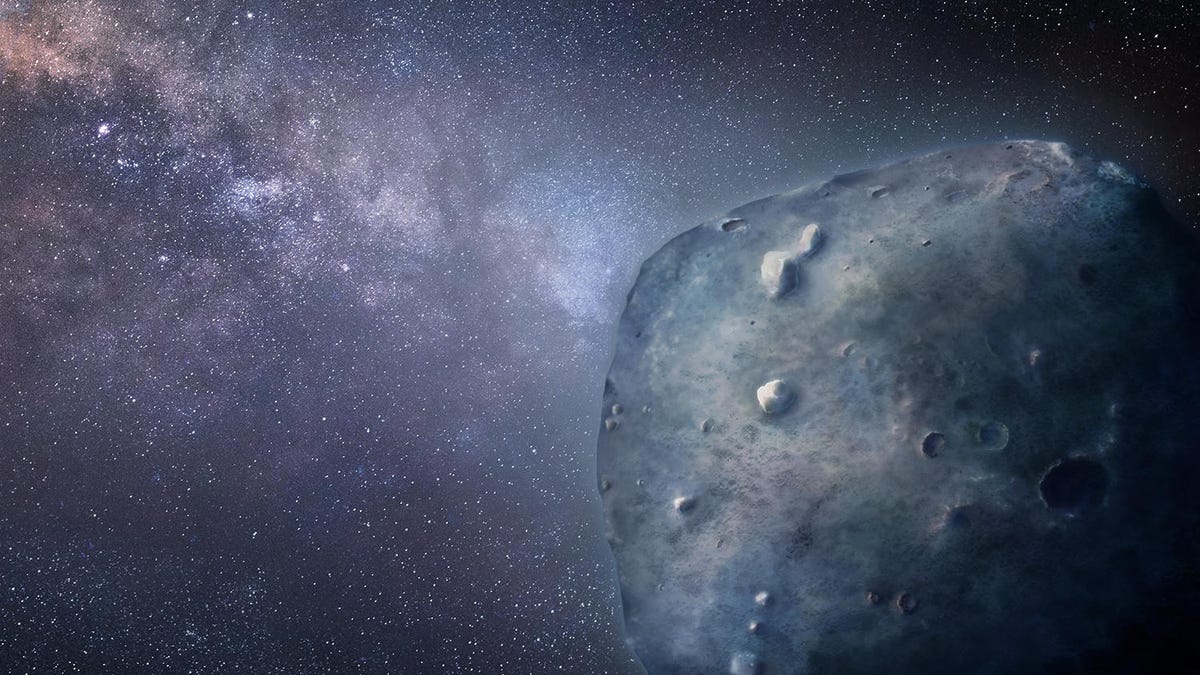Mountain-size asteroid will appear as a slow-moving star next month
Asteroid 1998 OR2 is the biggest space rock expected to fly past Earth this year, and even amateurs can catch it in the sky.

An artistic impression of another big asteroid: 3200 Phaethon.
A huge asteroid is set to make a close pass by Earth in April, and although astronomers label it "potentially hazardous," the only show it will be putting on over the next few centuries will be in the night sky.
Asteroid 1998 OR2 is thought to be as much as 2.5 miles (4.1 km) across, which would make it comparable to a decent-size mountain in many parts of the world.
Fortunately, when it makes its next close approach, on April 29, it'll pass by at a very safe distance of 4 million miles. It's still considered potentially hazardous, though, because NASA's Center for Near Earth Studies classifies anything reasonably bright that comes within about 4.6 million miles of Earth as such. That means there are lots of potentially hazardous asteroids out there that we know of and virtually none of them is a real hazard to humans at any given moment.
But 1998 OR2 is still quite a biggun -- the biggest asteroid expected to fly by our planet in 2020, actually -- which means it may be visible next month to even amateur astronomers.
"[Skywatchers] peering through telescopes will see it as a slow-moving 'star,'" NASA solar system ambassador Eddie Irizarry wrote for EarthSky. "Observers with at least 6-inch or 8-inch telescopes (the number indicates the size of the primary mirror) will see the asteroid (very slowly) moving in front of the stars."
Irizarry offers more detailed tips for spotting the space rock here.
If you don't have a big enough telescope to do your own spotting, the Rome-based Virtual Telescope Project already has you covered with a livestream that will start on April 28. VTP has already been scoping 1998 OR2 and grabbed this image of it approaching:
And if you miss it altogether, the small-town-size rock will make an even closer (but still totally safe) fly-by in 2079. And other big space rocks will come close enough for observations in 2024 and 2027. In 2029, the mega-asteroid Apophis (which is actually a little smaller than 1998 OR2) will make a close pass that was once cause for concern.
It's since been determined that Apophis poses no threat, so enjoy the night sky watching fear-free for at least another decade, unless something sneaks up on us, as sometimes happens.

